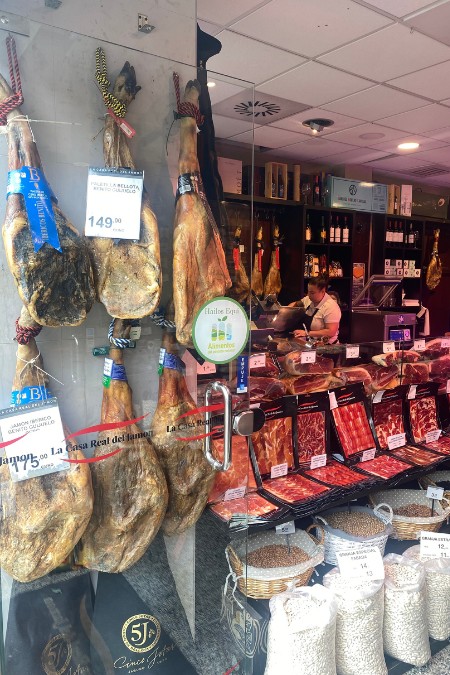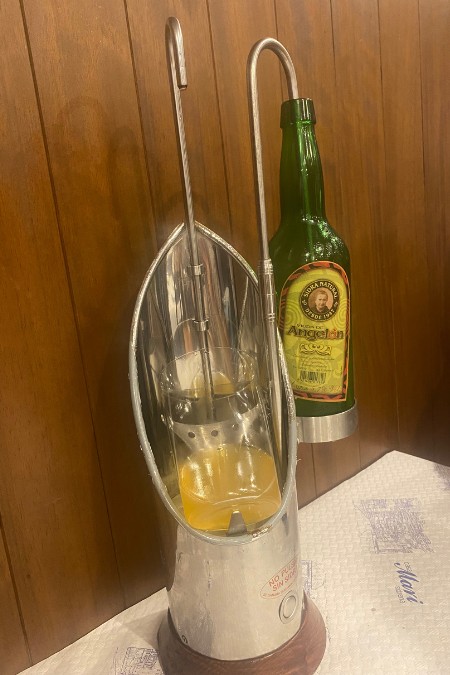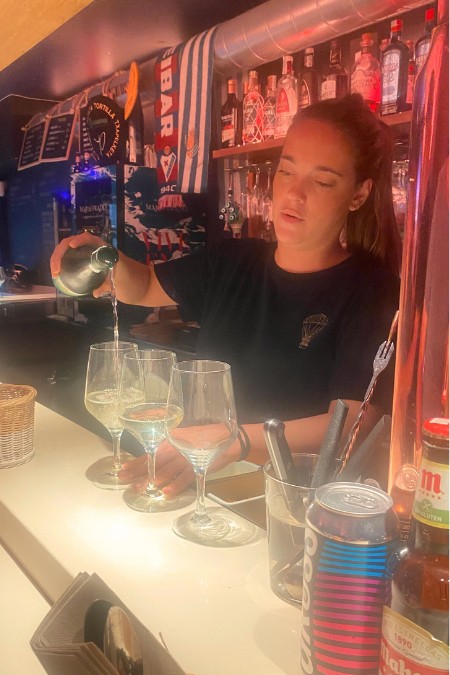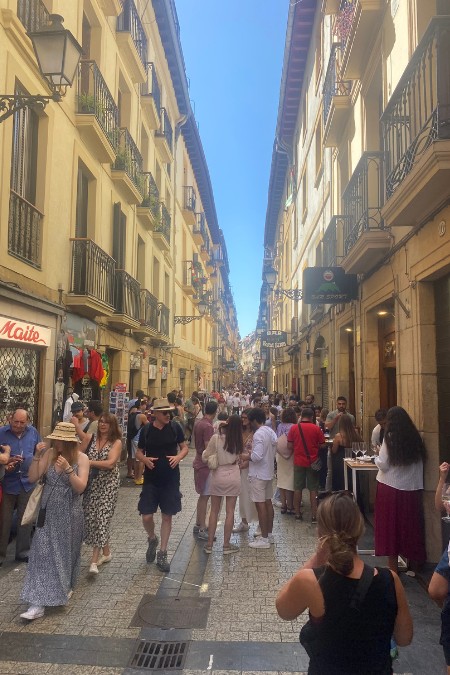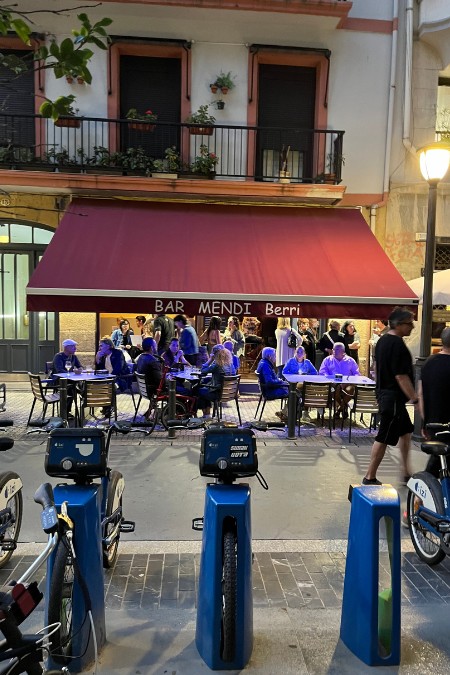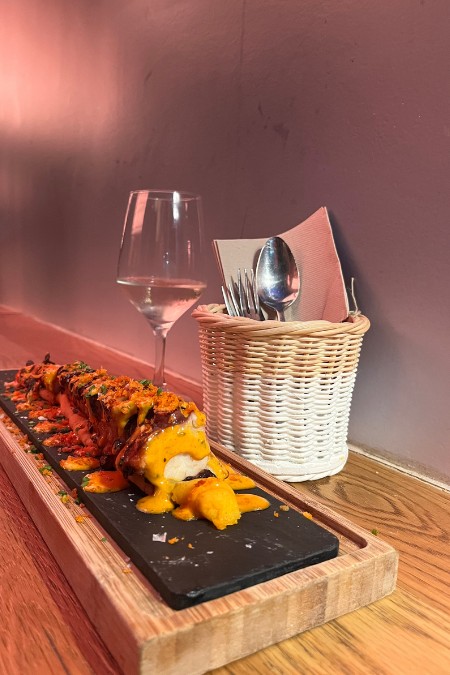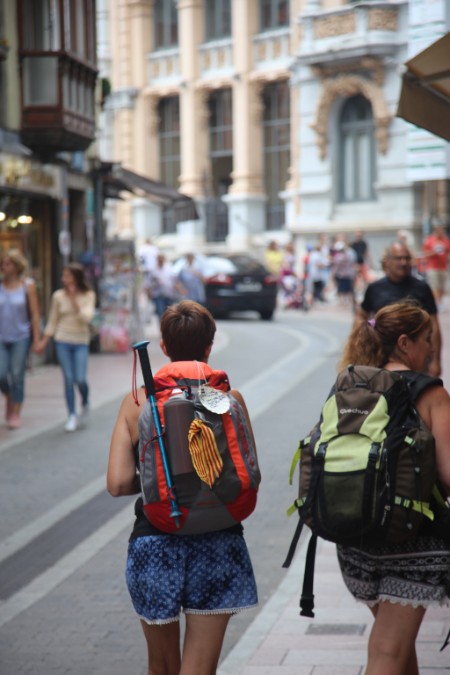09 Oct 24
Your Guide to the Best Eats in San Sebastián!
Did you know that the Camino del Norte is not only a breathtaking coastal trek but also an unofficial journey through foodie paradise? The 800km trail traverses four distinct regions of Spain, so you can experience each region’s unique culture through its culinary offerings. While seafood often takes centre stage due to its proximity to the coast, there are also exceptional land-based dishes to savour along the way. Enjoy fine dining at a Michelin-starred restaurant one night and discover beloved local hidden gems the next. Here’s your Guide to the Best Eats in San Sebastián and beyond!
At the starting point, we must highlight what many consider the mecca for food lovers: San Sebastián! This city boasts one of the highest concentrations of Michelin-starred restaurants in the world, and one word synonymous with San Sebastián is pintxos.
How to eat pintxos like a local in San Sebastián
Pintxos (pronounced pin-cho) are the Basque equivalent of Spanish tapas and are integral to Basque cuisine. These small snacks or appetisers come in various forms. Some are displayed on bars for patrons to choose from, while others are made fresh to order from a menu that changes daily. There are dozens of pintxo bars within a 1.5km radius of the Old Town, and locals often have their favourite spots for specific items.
With so many options in San Sebastián, it can be overwhelming to know where to start. Here’s my recommendations and must-try items. All bars have at least one speciality. The people serving will happily show you the speciality list or tell you what to order. Pintxos are designed for being eaten while you stand. Eat your pintxos away from the bar – if the place is packed, stand back to allow others to order. Many bars have standing tables out the front, so you can eat your pintxos while you people watch.
Warning! Do not to be put off by establishments that look modest or rundown. In the Basque Country, there’s a common belief that the messier a bar’s floor, the tastier the food. Dirty floors indicate lots of customers!
First, let’s start with some must-try items you shouldn’t miss while in San Sebastián.
Cured Iberian ham (also known as “Jamón ibérico”)
One of the most prized and sought-after hams in Europe comes from free-range black Iberian pigs. These pigs roam oak forests, known as “dehesas”, where they feed exclusively on acorns during the final stage of their growth. This unique diet gives the ham a distinctive flavour. Hams are classified based on the pigs’ diet and the percentage of Iberian ancestry, with those raised on acorns and purebred Iberians being the most desirable and expensive! Several grazing pastures in the Basque countryside, just outside San Sebastián, are home to these pigs, allowing you to taste some of the finest ham in Spain at local bars in the city.
Basque cider
In Spanish, cider is called “sidra”, while in Basque, it’s referred to as “sagardo”, meaning “apple wine”. Basque cider is known for its bone-dry and acidic profile. If you enjoy kombucha, natural wines, or sour ales, you’ll likely appreciate this beverage.
Basque cider is best served cold in a wide glass and poured from a height to release any trapped carbon dioxide. You’ll often see bartenders using this method when serving patrons. Tourists and newcomers are easily recognisable, as they tend to fill up their glass as if pouring a beer. Don’t make this mistake! When pouring yourself a glass, it’s customary to pour from a distance and in small amounts – typically filling the glass to one or two fingers deep. Cider is enjoyed in small sips, and the best time to savour its flavours is right after pouring.
FUN FACT! If you order a bottle, some bars and restaurants may provide an Electric Cider Pourer! Don’t be intimidated; this device is designed to pour cider efficiently and with flair, creating an engaging experience for patrons. Just place your glass under the spout and press the button, and the machine will draw cider from the bottle and pour it fresh into your glass. Remember the golden rule: no more than one or two fingers deep! In Basque culture, it’s often said that you should drink “little and often”.
Txakoli wines
Txakoli wines are a celebrated part of Basque gastronomy, with winemaking traditions in the region dating back to ancient Roman times. The main grape variety used is Hondarrabi Zuri, a white grape that flourishes in the coastal climate. These refreshing wines pair perfectly with seafood and fresh fish, which are staples of Basque cuisine. A unique feature of Txakoli is that it’s typically poured from a height to enhance its slight fizz and aerate the wine, with the server holding the bottle high above the glass. Order a glass at the bar, and you’ll see what I mean!
Navarra wines
Another great opportunity to taste something local is with a glass of Navarra wine. These wines come from the Navarra region, which encompasses part of the northern Basque Country. Navarra wines offer a diverse range of styles, including red, white, and rosé, made from common grape varietals such as Garnacha, Tempranillo, Chardonnay, and Viura. Because of this variety, Navarra wines pair well with various foods, such as grilled meats, cheeses, and the region’s famous pintxos.
Basque cheesecake
The best eats in San Sebastian include Basque burnt cheesecake. Originating from the Basque region, this crustless cheesecake has a delicious caramelised exterior. It was first created in the late 1980s at La Viña restaurant, which was founded in 1959 by brothers Antonio and Eladio Rivera. Antonio’s son, Santi, developed the recipe in the late 1980s after attending a cooking course in Paris. The cheesecake quickly gained popularity and is now a beloved dessert worldwide. You can visit the restaurant and experience where it all began. Fun Fact! Because of its crustless nature, Basque cheesecake is a great dessert option for gluten-free eaters – hurray!
- Cured Iberian ham
- Basque burnt cheesecake
- Electric cider pourer
- Txakoli wine
Pintxos bar hopping in San Sebastián
Now that you have some staple items in mind, it’s time to hit the streets for your ultimate pub crawl, or “taberna ibilaldi” in Basque! Pintxos are best enjoyed by going from bar to bar.
Below are some recommended establishments and must-try dishes. Remember, Basque cuisine is always evolving, so there’s always something new to taste. Don’t hesitate to explore options beyond the list – you’re in a fantastic place to take culinary risks!
We’ll kick off in San Sebastián’s lively Old Town, just a short stroll from the city’s main attraction, La Concha Beach. This historic neighbourhood boasts narrow streets, pintxo bars, charming squares, and beautiful architecture, much of which hails from the 19th and 20th centuries – a period known as the “Belle Époque”. Here, you’ll find the highest concentration of pintxo bars, making it a lively hub for food lovers. Be confident, as these places can get busy, so don’t hesitate to jump right in!
Restaurante SSua
Focuses on well-prepared local ingredients with half-portions for sharing. Special items to look for:
- Grilled Iberico pork with tomato chutney
- Onion soup
- Asparagus
- Croquettes – highly recommended!
Bar Nestor
Famous for three signature dishes:
- One of the best tortillas in the city
- Txuleta – slow-grilled Basque steak sprinkled with sea salt
- Tomato salad
La Cuchara de San Telmo
Serves modern Basque cuisine with made-to-order dishes instead of bar displays. Select from the seasonal menu on the blackboard, and the bartender will note your name to call it out when your order is ready! Special items to look for:
- Suckling pig
- Hot goat cheese with peppers
- Hake
- Octopus
- Razor clams
Kapadokia
Known for its pintxos and raciones. Special items to look for:
- Txipiguetti (Squidgetti) – Octopus Galicia style
- Ravioli de gambón – King prawn ravioli
Atari
A popular bar with a modern vibe, located just across from the Basílica de Santa María. Special Items to look for:
- Huevo a Baja Temperatura
- Penceta a Baja Temperatura
Other notable establishments in this area include Gandarias, Ganbara and Cara Urola.
- San Sebastián’s Old Town
- Cafe-Bar Mendi Berri
- Pulpo a la Brasa
San Sebastián’s Gros Neighbourhood – pintxos and surfers!
If you’re looking to escape the crowds in the Old Town, head over to the Gros neighbourhood. Nestled between the Kursaal Palace and Monte Ulia, Gros is close to Zurriola Beach, making it a hotspot for surfers. This vibrant area is packed with charming shops, boutiques, and a lively food scene – a fantastic alternative to the bustling tapas route in the Old Town. Below are some bars you won’t want to miss.
Bar Bergara
Highlights include tortilla de patatas, mushroom omelette, and anchovy omelette. Don’t miss the Txalupa (a gratin of mushrooms with prawns) and Udaberri (courgette with crayfish cream).
Bar Zabaleta
A casual bar known for its delicious tortilla de patata! They also offer fantastic grilled squid.
Ezkerra Taberna
Try their Ensaladilla rusa (Russian salad) and classic tortilla de patata (potato omelette).
San Sebastián’s Michelin-starred restaurants
Lastly, since we’ve talked about Michelin, it would be remiss not to recommend some top-tier restaurants for those eager to elevate their culinary experience. If you’re seeking the ultimate dining adventure, these three Michelin-starred establishments offer a truly refined and unique taste of San Sebastián’s culinary scene.
Akelarre
Situated outside the city centre of San Sebastián, this sleek venue offers stunning sea views and an innovative menu. It has proudly held three Michelin stars since 2007.
Arzak
An elegant, family-run restaurant established in 1897, featuring tasting menus that showcase modern Basque cuisine.
Martín Berasategui
The restaurant is led by the renowned Martín Berasategui Olazábal, a Spanish chef known for his expertise in Basque cuisine. Martín holds a total of 12 Michelin stars, more than any other Spanish chef!
If you’re interested in exploring the food culture of San Sebastián more deeply, consider joining a guided tour. There are plenty of options available, whether you prefer a one-on-one experience or a group setting.
Experience San Sebastián on the Camino del Norte
- San Sebastián to Bilbao (9 days) – immerse yourself in the Basque country and enjoy the culinary delights of San Sebastián and Bilbao
- San Sebastián to Santander (15 days) – continue beyond Basque Country to enjoy sublime gastronomy in the capital of Cantabria
- Camino del Norte Highlights Trip (17 days) – includes a few days in the renowned foodie capitals of San Sebastián and Bilbao
- Full Camino del Norte (43 days) – walk the entire 800km route through Basque Country, Cantabria, Asturias and Galicia
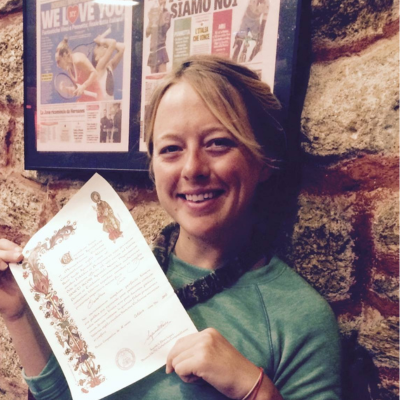
Written By
Liz Crouch
Liz, a New York native now in Melbourne, has over 11 years of international guiding experience on land and sea. Her expertise in active travel, especially for women, establishes her as a trusted authority on transformative adventures. RAW Travel clients benefit from Liz's expertise on trails like Camino Frances, Camino del Norte and Chemin du Le Puy.

